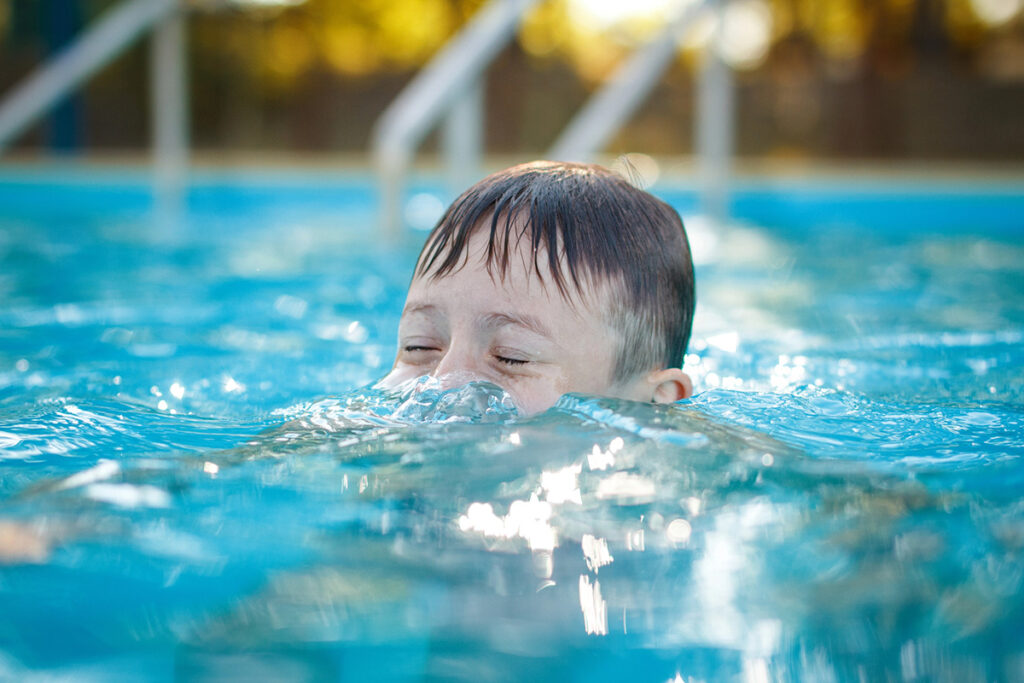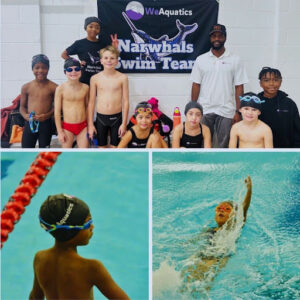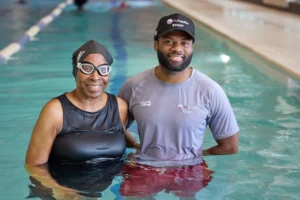Learn the Signs of Drowning and What to Watch Out for at the Pool
We understand the worry that comes with seeing your child cough during swimming classes or hearing stories about dry drowning on social media, intended as cautionary tales.
Your concerns are completely natural— your child’s safety is our number one priority, too. At WeAquatics, we listen to these fears from parents every day, and we want to reassure you: this blog post is here to bring you peace of mind, not add to your worries.
We will walk you through what dry drowning really is and is not, what signs to look for, and how we can work together to keep your children safe in the water.
Our goal is to replace fear with knowledge, giving you the confidence you (and your kids) need to enjoy swimming!
Addressing Parental Concerns: What is Dry Drowning?
You’ve heard the terms ‘dry drowning’ or ‘secondary drowning’ and probably thought, ‘What is dry drowning, and why should I be concerned?’ First, take a deep breath. The term ‘dry drowning’ is a misnomer that has caused unnecessary panic among caring parents like yourself.
The idea behind dry drowning is that a child could ‘drown’ or experience serious respiratory issues hours or even days after being in the water without actually being submerged in it again. It sounds terrifying, and this thought has led parents to stand over their kids as they sleep after coughing at the pool.
But the comforting truth is this: dry drowning is not a medically recognized condition.
The Origin of the ‘Dry Drowning’ Myth
The term ‘dry drowning’ isn’t accurate.
However, your concerns about drowning are valid, as it is a real risk that parents should be aware of. Drowning is the leading cause of accidental death for children ages 1 to 4.
Supposed signs of dry drowning:
- Coughing after swimming
- Fatigue after a day in the pool
- Mild respiratory issues
What these actually are:
- Normal reactions to physical activity and aquatic play
- Usually, they resolve on their own without an intervention
Real water safety concerns to look out for:
- Persistent coughing that doesn’t improve
- Significant difficulty breathing
- Extreme fatigue or behavioral changes
- Chest pain
- Fever
If you notice these more severe symptoms, consulting a physician is always best.
But remember, these symptoms are extremely rare. This will never happen at swimming classes, nor is it associated with normal swimming activities.
Understanding ‘Dry Drowning’ Concerns
To understand why ‘dry drowning’ isn’t possible while taking swimming lessons, we need to look at what actually happens during a drowning incident.
The medical definition of drowning is a ‘process of experiencing respiratory impairment from submersion/immersion in liquid.’
Here’s what parents should know:
1. The general rule of thumb is that it would take a significant amount of water inhalation to potentially cause a ‘dry drowning’ incident.
This usually means:
- A prolonged struggle where someone needed air but couldn’t get it for an extended period of time.
- A severe panic situation under the water
- A concussion right before or during submersion which might impair normal functions that keep air from entering the lungs.
2. Getting water in your nose or mouth during normal swimming activities is common and generally harmless. It will not have the same effect as being submerged in water for a prolonged period.
3. The body has natural reflexes to protect water from entering the lungs during normal swimming activities.
4. Supervised, one-on-one swimming lessons like classes at WeAquatics have no risks of such incidents because children are monitored in a controlled environment.
How to Keep Your Child Safe in the Water
The good news is that drowning is preventable with proper safety measures and water survival classes like Infant Swimming Resource™ (ISR).
While WeAquatics is here to teach your children essential survival swim skills, you play the most important role in water safety.
Here are some practical tips that are always a good reminder:
- Always supervise children around water, even if they know how to swim
- Learn what your child knows and understand their abilities and limitations
- Install proper barriers and monitors around your home pool
- Learn CPR and basic water rescue skills
- Use life jackets when needed
Remember, the most important safety device is a well-trained, attentive adult. Your watchful eye is your child’s greatest protection.
WeAquatics’ Approach to Water Safety Education
Your child’s safety is always our first priority. Our programs are designed to teach essential water safety skills in a fun, safe, and supportive environment.
We keep your little ones safe with one-on-one swim classes with experienced instructors. All classes are age and skill-appropriate and tailored to your child’s needs. Repetition and knowledge are the best defense against water accidents.
We aim to help your child become confident and capable in the water so you can breathe a sigh of relief.
We hope this post has helped ease your fears about ‘dry drowning’ and provided useful information about real water safety.
If you have more questions or concerns, we’re always here to help. Your peace of mind is important to us, and we’re dedicated to making swimming an enjoyable experience for your whole family.
Ready to start your child’s journey to becoming a confident, safe swimmer? Enroll in WeAquatics ISR for little ones ages six months to four years old and Learn-to-Swim for children and adults ages four and above to take the first steps toward stress-free swimming!





